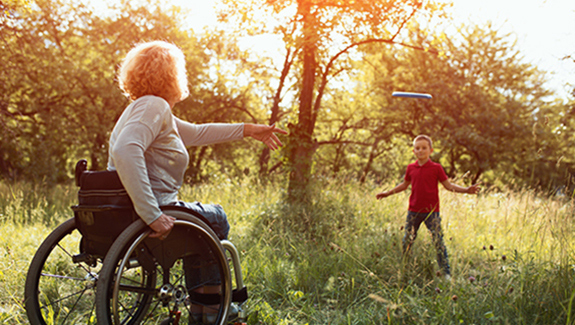Extra Precautions Wheelchair Users Can Take During the COVID-19 Pandemic
Your guide to staying rested, inspired and hopeful.

Everyone needs to take great care during the COVID-19 pandemic. For wheelchair users, there can be additional risks that call for extra precautions. One of the reasons for this is that the COVID-19 virus may survive on wheelchair or assistive technology (AT) surfaces.
Like other viruses COVID-19 spreads via droplets produced by coughing and sneezing. Current evidence suggests that COVID-19 may remain viable for hours to days on surfaces made from a variety of materials.
Whatever the precise figure is, the safest policy is to assume that every surface you touch could be infectious and act accordingly. If you push a manual wheelchair or use other types of assistive technology, there are unique precautions you should consider taking.
In this article, we will discuss the importance of keeping your hands clean and highlight several resources you may find useful.
Wash your hands thoroughly and frequently
It's no secret that good hand hygiene is believed to help prevent the spread of COVID-19. Therefore, the handwashing drill is the same for everyone across the globe.
The Icahn School of Medicine at Mount Sinai recommends washing your hands frequently with soap and water for at least 20 seconds, or with an alcohol-based hand sanitiser if soap and water are not available.
If you use the tires to push your wheelchair, it's even more vital to wash your hands. You are touching whatever the tires have picked up from the floor every few seconds. And the floor is a place where viral droplets may end up, along with all kinds of other unpleasant things.
It's equally important not to touch your face with your hands, as this is another way to transfer the virus from infected surfaces to yourself. Remember, even if you washed your hands recently, they could have been re-infected as soon as you touch another surface.
To wear gloves or not is a matter of personal preference, but bear in mind that the gloves can also be infected inside and out, so you still need to wash your hands after removing them.
If you are catheterising, you should always make sure to wash your hands before and after you are catheterising.
Keeping your wheelchair cleanIf you are a manual wheelchair user, the hard surfaces you touch most frequently will be parts of your wheelchair, especially the wheel rims and tires. If you use an electric wheelchair or other assistive technology, your joystick or control panel are the likeliest sources of infection and need to be kept clean.
One way to help keep the wheels of your wheelchair clean is to soak two cloths or some kitchen towels in warm, soapy water and hold one in each hand as you wheel your chair, rotating the wheels through the cleaning materials.
Then think about which parts of your wheelchair you and others frequently touch. Push handles, arm supports, foot supports, and wheel locks all need careful cleaning; as do grab bars or any surfaces you make contact with while getting in and out of the wheelchair.
Be wary of using bleach, as this can react badly with the plastics used in some wheelchair construction. Soap will be fine in any case.
Social distancing matters even more in a wheelchairSitting in a wheelchair places you lower than many people who are standing near you. Thanks to gravity, that means you may be more at risk from the droplets people produce while talking, coughing, and sneezing. As a result, it's important that you practice social distancing to help ensure a generous buffer between you and germs.
What about masks?A medical N-95 mask offers more protection, of course, than a cloth mask. But medical supplies are in high demand. It’s worth considering the benefits of using any type of face covering in an effort to provide protection from low-flying droplets. Just remember to clean yourself and the mask after removing it.
If you have caretakers or home healthcare providersIf you rely on personal assistance services, you may want to ask your caregivers to wear a mask and gloves – especially if they have been in contact with anyone who has shown possible symptoms of the flu or COVID-19, even if they aren't symptomatic.
Likewise, you can ask anyone in your care network to wash their hands or use hand sanitiser before each time they touch you. If they are in your home, make sure to disinfect any counters or places their hands may touch.
Everyone is differentWe understand that every wheelchair user is unique. There are lots of variables, ranging from health conditions to the type of wheelchair or other assistive technology you use. Naturally, then, this is general advice that may not apply to everyone.
The good news for most people is that, by being sensible and taking more precautions, you can continue to live your life despite the Covid-19 pandemic.
Don't worry if your hand washing and wheelchair cleaning takes time and keeps people waiting. Your safety is the most important thing.
Precautions re-cap:- Wash your hands for a minimum of 20 seconds front and back
- Clean any places where your hands may have touched your wheelchair
- If you wear gloves, make sure to wash your hands after removing them
- Ask anyone in your care network to wear a mask and sanitise their hands before touching you
- Wipe down your headrest or the back of your wheelchair
- Wipe down any joysticks, controls, and armrests
- Wipe down any areas of your wheelchair that can be touched by others
- Do not touch your face after touching hard surfaces
- Practice social distancing wherever possible




